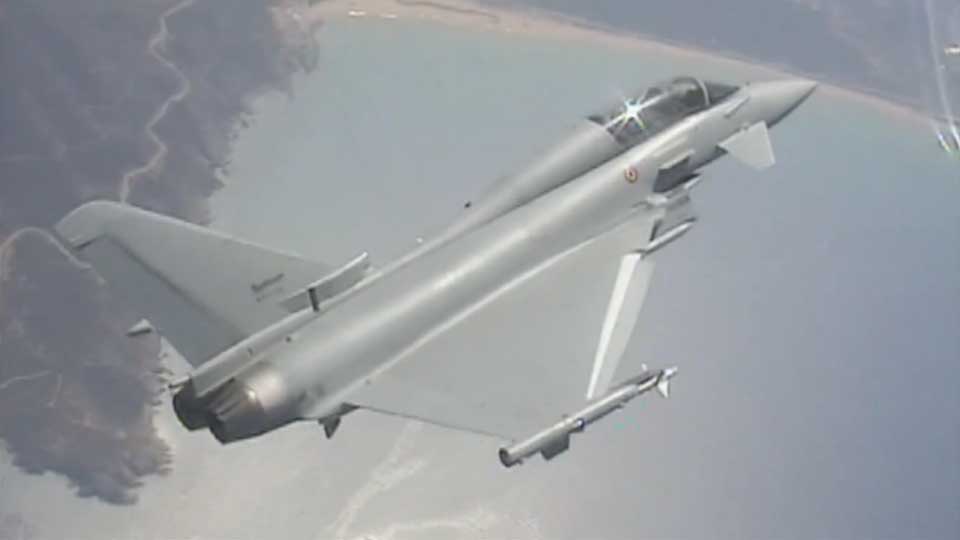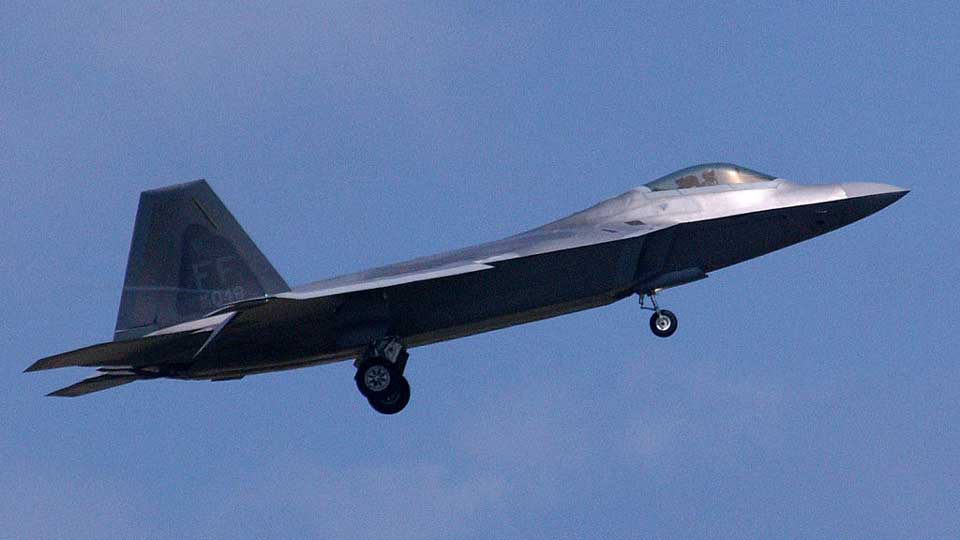New fighter jet partners
The first big announcement came on December 9, when the government revealed it would be developing its next fighter with the UK and Italy. That marks a major shift in policy for a country that has worked with the United States on every major defense-industry collaboration since the end of World War Two.

Japan's Mitsubishi Heavy Industries will team up with the UK's BAE Systems and Italy's Leonardo on a fighter jet they hope to deploy from 2035.
Defense Minister Hamada Yasukazu hailed it as the start of a new era of cooperation that will "encourage innovation in our country's broader economy and serve as a foundation for peace and stability in the Indo-Pacific as well as European regions."
UK Ambassador to Japan Julia Longbottom said the project underscores the countries' shared commitment to peace and stability: "The Global Combat Air Program is about no one country; it's about partners with shared values working together to develop a capability that is critical to keep us ahead of the threats from elsewhere."

Though the decision to switch partners took some by surprise, there was a strategic and historical rationale.

The Air Self-Defense Force's current fighter jets--the F-35, F-15, and F-2--were all built either by US firms or developed as collaborations between US and Japanese firms. This affords the SDF a high degree of interoperability with the US military--something Japan's defense ministry was keen to maintain.
The ministry had been negotiating with US-based Lockheed Martin to make a next-generation jet with Mitsubishi Heavy Industries, but the talks hit a stumbling block.
The US firm's timeframe did not suit Japan's needs. The fact that US defense officials were reluctant to share sensitive stealth technology, and were also skeptical about the future of manned fighter jets, didn't help.
The UK, on the other hand, was looking to update its Eurofighter jet and get the new design in the air from 2035. Italy emerged as a partner because it was a joint developer of the Eurofighter.

There was another factor that influenced the shift away from the US. Japan had not forgotten about an ill-fated effort to collaborate with Washington on jets in the 1980s and '90s.
At the time, Japan had a plan to develop its own fighter, but the US was struggling with a huge trade deficit and turned up the pressure on Tokyo to buy its jets instead.
After many twists and turns, the two sides agreed to develop aircraft together. The result was the F-2. But it wasn't all smooth sailing. The US appeared reluctant to share information about its technology, and there were accusations that it purloined Japanese technology.

The alliance hit another stumbling block around ten years ago when Japan asked to buy F-22 jets from the US. The Lockheed Martin F-22 was the world's most advanced stealth fighter jet, and the US didn't want to export it. Instead, Washington pushed Tokyo to buy the more widely used F-35.
For some Japanese politicians and bureaucrats, a new era of working with Britain and Italy is a welcome change. Still, Japan couldn't afford to appear to be snubbing the US and there was a great deal of diplomatic work behind the scenes to prepare for the announcement. On December 9, the Pentagon issued a statement saying it supports Japan's plan to work with what it called "like-minded allies and partners."
As part of that diplomatic groundwork, Japan and the US agreed to start work next year on the joint development of unmanned aircraft to support the new fighter jet.
Counterstrikes and shift away from spear and shield
On December 16, the Cabinet approved three documents that reshape how the nation can defend itself.
One is the National Security Strategy, the basic guidelines for diplomacy and security. The second is the National Defense Strategy, which outlines defense goals and measures. The third is the Defense Buildup Plan, which lists total defense spending and the scale of equipment development.

The security and defense strategies outline a new policy that would give Japan the authority to launch "counterstrikes" in certain circumstances. Such counterstrikes would be strictly limited to self-defense and would never be preemptive. Any counterstrike would only be directed against military targets and use the minimum force necessary to neutralize the threat.
The counterstrike capability allows Japan to attack enemy bases. The government says that capability is within the scope of the right to self-defense outlined in the Constitution, but it had never before been adopted as a policy decision. It says the change is necessary now because threats have changed in nature.
Previous security strategies listed North Korea and China as explicit threats. Russia has now been added to that list.
China is still described as the "biggest strategic challenge," which echoes US phrasing. That characterization provoked an immediate reaction from Beijing. A foreign ministry spokesperson said on Friday that China strongly opposes Japan's security overhaul.
"Japan ignored the facts, deviating from its commitments to bilateral relations and understanding," says Wang Wenbin. "Japan ended up slinging mud at China for no reason."

The government will begin increasing defense spending from next year. By fiscal 2027 it will be 2 percent of GDP.
As part of that spending, Tokyo will set aside 5 trillion yen over five years to be used for "standoff defense capability," which enables strikes from beyond the range of enemy missiles. Specifically, the Defense Ministry plans to improve the range of its Type 12 surface-to-ship missile system.

*Related article: Japan considers US Tomahawk missiles to boost self-defense
That will take time, of course. The new system will not be operational until fiscal 2026.
In the meantime, the government is considering purchasing US-made Tomahawk missiles.
Tomahawks offer pinpoint accuracy and a range of more than 1,000 kilometers. They can be launched from the ground as well as from ships and submarines. They can fly at low altitude, which makes them hard for radar to detect, and at subsonic speeds, which provide good fuel-efficiency. All in all, some serious firepower for a professed pacifist country. Adding them to the arsenal represents a major shift in Japan's exclusively defense-oriented policy.
The Japan-US alliance is based on a concept known as "Spear and Shield." The US is the spear, and Japan the shield. But we can expect those roles to shift in the not-too-distant future.

